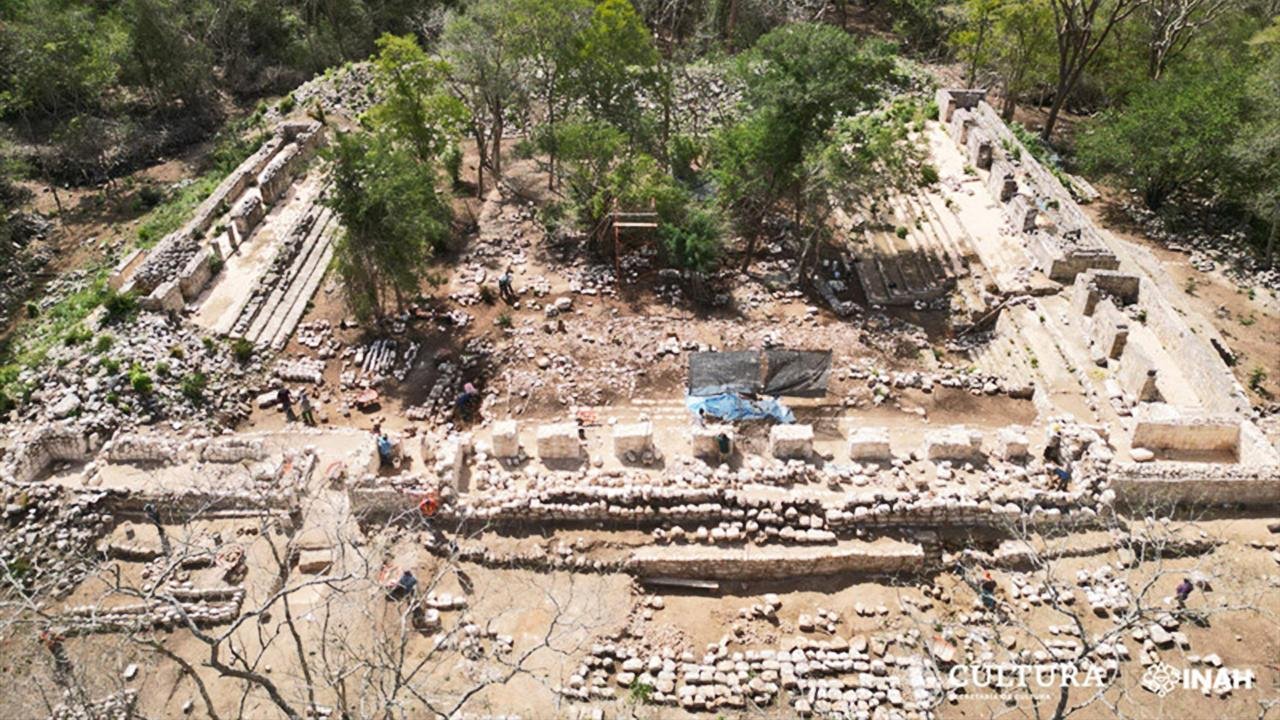Researchers have unearthed a significant ancient Maya city and a palace-like structure in southeastern Mexico. The discovery was made during preparations for the Maya Train railroad project, a 930-mile railway traversing the Yucatán Peninsula. The Mexican National Institute of Anthropology and History (INAH) has shared these revelations, enhancing our comprehension of Maya history.

The newly discovered palace was found within the archaeological zone of Kabah, situated in the Puuc region of Yucatán state, not far from the modern city of Mérida. Kabah, translating to “strong” or “powerful” hand in the ancient Maya language, boasts a history dating back to approximately 400 BCE. However, early in its history, it was inhabited by a small community of hunter-gatherers, lacking significant architectural structures.
Kabah’s initial founding between CE 250 and 500, marks an early period in the city’s history. Over the centuries, Kabah’s development remained sluggish, with a lack of permanent water sources hampering its growth. It wasn’t until around 400 CE that evidence of monumental architecture first emerged at the site.
The city eventually thrived during its peak between 750 CE and 900 CE. However, circa 950 CE, the ruling dynasty chose to forsake the city, with only the less affluent residents remaining in the outskirts. The mysterious abandonment of the city was part of a larger decline that marked the end of Maya dominance in Mesoamerica.

Researchers have named the newly uncovered Maya remains Petenero Palace. The structure exhibits distinctive features, including an 85-foot quadrangular structure adorned with motifs of feathers, beads, and birds intricately carved into its architecture.
The palace shares similarities with Maya ruins discovered in Guatemala’s Petén Department. Notably, the palace’s roof was likely constructed using a perishable material, like guano palm, which hasn’t survived through the ages.
Diego Prieto Hernández, INAH’s general director, explained, “We propose that an important migration from that site founded Kabah.” This migration from northern Central America to southern Mexico is believed to have been a pivotal moment in the city’s establishment.

The discovery of these complexes is particularly significant due to their excellent preservation despite being located on private land. This discovery offers new perspectives on ancient Maya migration and the rich history of this remarkable civilization, known for its advanced calendar, mathematics, astronomical systems, fully developed writing system, and striking architecture.